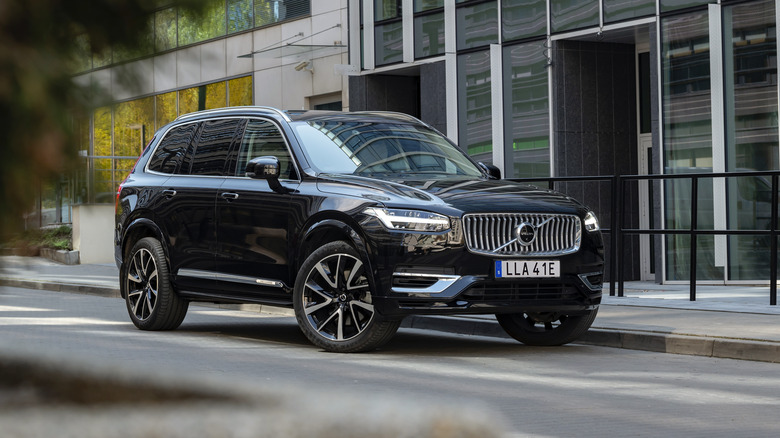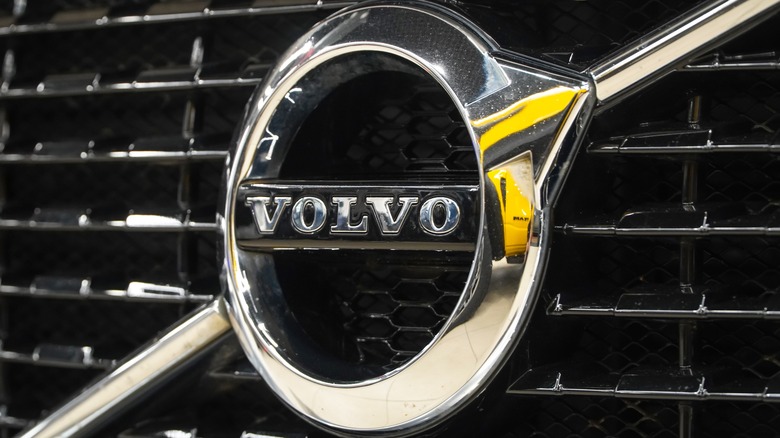How Much Do Volvos Cost To Maintain? Here's How Much You Might End Up Paying
Volvo might be renowned for its beautiful Scandinavian design and its dedication to building the safest cars on the road, but owning one is about more than simply enjoying the ride. It's also about maintenance and upkeep, and that can have a heavy cost. Volvo has always been good at hitting that sweet spot of luxury and affordability when compared to its rivals. Sure, maintaining a Volvo is more costly than reasonably priced brands like Toyota or Honda, but it's certainly not as steep as luxury competitors and other major car brands with high maintenance costs.
Based on data from ConsumerAffairs, Volvo owners should budget roughly $1,051 annually for maintenance and repairs, which puts the Swedish automaker well above the industry average of $858. This number is a fantastic benchmark for real-world ownership expenses since it includes both scheduled and unplanned repairs.
CarEdge offers a broader long-term view, estimating that a Volvo will cost around $10,073 to maintain and repair over its first 10 years. That's higher than average for mainstream vehicles but lower than its German luxury alternatives. The 10-year probability of a major repair is also fairly high at 34.92%, meaning one in three Volvo owners may face a significant repair bill within a decade. If you're buying used or out of warranty, it's worth factoring that stat into your budget.
Factors that influence Volvo maintenance cost
Not all Volvos are created equal when it comes to maintenance costs. Newer models with turbocharged and supercharged engines, like the XC90, XC60, and S60, often have more complex drivetrains that can raise repair bills. ConsumerAffairs claims that some Volvo owners, particularly as vehicles near the 100,00-mile mark, report regular problems with electronic components, infotainment glitches, and suspension wear.
Availability of parts and labor also affects cost. Volvo parts are typically more costly than domestic brands, and labor can rapidly raise the price since many repairs might call for dealership service or European specialized shops. Due mostly to their size, powertrains, and additional features, the XC90 and XC60 SUVs often have the highest average costs. Though still above average, sedans like the S60 often seem to be somewhat more reasonably priced to maintain.
Volvo's hybrid and electric vehicles come with their own additional cost considerations. Although EVs such as the XC40 Recharge skip oil changes and many conventional wear parts, battery system maintenance and software updates can add uncertainty. Although they have upfront costs that consumers should carefully consider, extended warranties or prepaid maintenance plans can help to level those spikes and avoid maintenance mistakes that can hamper your car's reliability.
How Volvo stacks up against competitors
Volvo sits comfortably between the mass-market names and luxury brands in terms of maintenance expenses. Volvo's annual average cost of $1051 is notably more than brands including Toyota ($602), Honda ($585), and Mazda ($631). Strong dependability ratings and low cost of ownership for these manufacturers help explain their appeal among budget-conscious consumers.
Owning a Volvo is still a far more reasonably priced venture to undertake than many of the luxury rivals. For instance, Mercedes-Benz drivers shell out roughly $1241 annually, while BMW and Audi owners pay an average of $1323 and $1349 per year, respectively. This leaves Volvo as the affordable choice in the premium category. When tracking the maintenance schedule and 10-year ownership projection, we see that Volvo's total maintenance expenses average $10,073 against Audi's $10,213, Mercedes's $12,962, and BMW's $15,991 over the same period.
Although some Volvo models might have costly repairs, they don't reflect the same high average maintenance expenses as some other European brands. Still, Volvo's costs are far higher than the $5,500 to $6,800 ten-year averages of more reasonably priced manufacturers such as Toyota and Honda. Volvo thus finds a unique balance: although it may not be the cheapest brand to keep, it offers premium features and safety without totally crossing into the budget-crippling zone of other luxury manufacturers.


